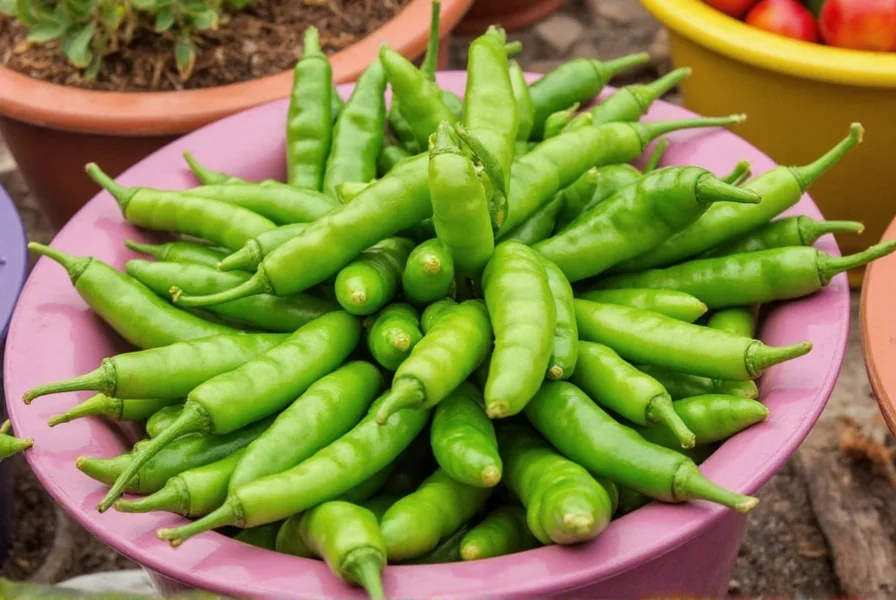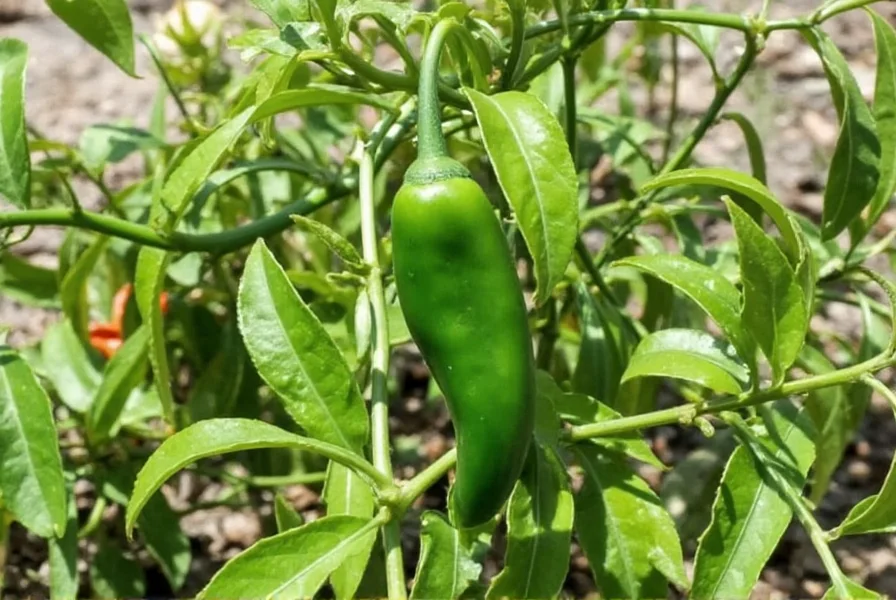Hatch chilies represent one of America's most distinctive regional agricultural products, with a flavor profile so unique that it earned a Protected Designation of Origin status. The specific terroir of New Mexico's Hatch Valley creates chilies that balance heat with complex sweetness unlike any other pepper grown worldwide.
The Unique Geography of Hatch Valley
The Hatch Valley sits at approximately 4,500 feet above sea level in southern New Mexico's Mesilla Valley. This high desert region provides ideal growing conditions for chilies with its 300+ days of annual sunshine, significant diurnal temperature variation (often 30-40°F differences between day and night), and well-drained sandy loam soil rich in minerals from the Rio Grande floodplain.
These specific environmental conditions directly influence the capsaicin levels and sugar content in the peppers, creating that signature Hatch flavor that ranges from mild to hot while maintaining remarkable sweetness. The intense sunlight develops complex flavor compounds, while the cool nights help the peppers retain sugars that would otherwise metabolize in consistently warm conditions.

Hatch Chile History and Authenticity
The story of Hatch chilies begins with Spanish settlers who brought chili seeds to New Mexico in the late 1500s. However, the modern Hatch variety traces back to the early 20th century when horticulturist Fabián García developed the first standardized New Mexico No. 9 chili at what is now New Mexico State University's Chile Pepper Institute in Las Cruces.
Despite common misconception, not all New Mexico chilies are Hatch chilies. True Hatch chilies must be grown in the designated Hatch Valley region. In 2014, the New Mexico Department of Agriculture established strict guidelines defining authentic Hatch chilies, protecting the name similar to how Champagne is protected in France.
| Characteristic | Hatch Valley Chilies | Other "Hatch-Style" Chilies |
|---|---|---|
| Geographic Origin | Exclusive to Hatch Valley, NM (35-mile stretch) | Grown in California, Texas, Mexico, etc. |
| Soil Composition | Mineral-rich Rio Grande floodplain soil | Different soil profiles affecting flavor |
| Climate Influence | High altitude desert with significant diurnal shifts | Typically more consistent temperatures |
| Flavor Profile | Distinct sweet-heat balance with earthy notes | Generally hotter with less complexity |
Growing Season and Harvest
The Hatch chile growing season follows a precise calendar dictated by New Mexico's climate. Farmers plant seeds in greenhouses in February and March, then transplant seedlings to fields in late April through May after the last frost. The plants flower in June and July, with harvest running from late July through September.
The "Hatch Chile Season" officially begins in late July when the first early-harvest chilies become available. These early chilies have thinner walls and brighter flavor. The peak harvest occurs in August and early September when the chilies develop thicker walls and more complex flavor profiles. Late-season chilies harvested in September tend to be hotter due to increased sun exposure.
Economic and Cultural Significance
Hatch chilies represent more than just a crop—they're central to New Mexican identity and economy. The annual Hatch Chile Festival draws over 30,000 visitors to the small town of Hatch, and chile roasting becomes a statewide ritual each summer. New Mexico produces approximately 75% of all chilies grown in the United States, with the Hatch Valley region accounting for the most prized varieties.
Despite attempts to grow "Hatch-style" chilies elsewhere, the unique combination of New Mexico's terroir creates a flavor profile that cannot be replicated. Commercial growers in California, Texas, and Mexico produce similar varieties, but without the specific soil composition, altitude, and temperature variations of the Hatch Valley, these chilies lack the distinctive sweet-heat balance that defines authentic Hatch chilies.

How to Identify Authentic Hatch Chilies
With increasing demand, many products falsely claim "Hatch" origin. True Hatch chilies will display the official New Mexico Chile Advertising Act certification logo and specify "Product of Hatch Valley, New Mexico" on packaging. During harvest season, local farmers' markets in New Mexico offer the most authentic experience, where you can watch chilies being roasted fresh.
When purchasing outside New Mexico, look for distributors who maintain the cold chain from harvest to consumer, as Hatch chilies are typically flash-frozen at peak freshness to preserve flavor. Canned or jarred products labeled simply "New Mexico chilies" may not be authentic Hatch Valley products.
Frequently Asked Questions
Can Hatch chilies be grown outside New Mexico?
While similar varieties can be cultivated elsewhere, authentic Hatch chilies cannot be properly grown outside the specific 35-mile stretch of the Hatch Valley in New Mexico. The unique combination of soil composition, altitude, sunlight intensity, and temperature variation creates the distinctive flavor profile that defines true Hatch chilies. Attempts to grow them in California, Texas, or other regions produce peppers with different heat levels and flavor characteristics.
What makes Hatch Valley's soil ideal for chili growing?
Hatch Valley sits on the Rio Grande floodplain, which provides mineral-rich sandy loam soil with excellent drainage. The soil contains specific mineral compositions from ancient lake beds and river deposits that contribute to the chilies' unique flavor profile. The high calcium content in particular affects the cell structure of the peppers, influencing both texture and how flavor compounds develop during growth.
When is the best time to buy fresh Hatch chilies?
The Hatch chile season runs from late July through September, with different flavor profiles available throughout. Early-season chilies (late July) have thinner walls and brighter flavor. Peak season (August) offers the most balanced sweet-heat profile with thicker walls. Late-season chilies (September) develop more heat due to increased sun exposure. For the freshest experience, visit New Mexico during August when local roasting events are most prevalent.
How do Hatch chilies differ from poblano or jalapeño peppers?
Hatch chilies belong to the Capsicum annuum species like poblanos and jalapeños but represent specific New Mexican varieties. They're typically longer and more tapered than poblanos, with thinner walls. While poblanos maintain consistent mild heat, Hatch chilies range from mild to hot within the same crop. Compared to jalapeños, Hatch chilies have a more complex flavor profile with earthy, sweet notes rather than the sharper, grassier flavor of jalapeños. The heat level of Hatch chilies (5,000-10,000 Scoville units) generally falls between poblanos (1,000-2,000) and jalapeños (2,500-8,000).
Why do Hatch chilies have protected designation status?
In 2014, the New Mexico Department of Agriculture established the New Mexico Chile Advertising Act to protect the Hatch name, similar to Champagne or Parmigiano-Reggiano protections in Europe. This designation ensures that only chilies grown in the specific Hatch Valley region can be marketed as "Hatch" chilies. The protection prevents misleading labeling and preserves the economic value and authenticity of this culturally significant agricultural product that represents generations of New Mexican farming tradition.










 浙公网安备
33010002000092号
浙公网安备
33010002000092号 浙B2-20120091-4
浙B2-20120091-4